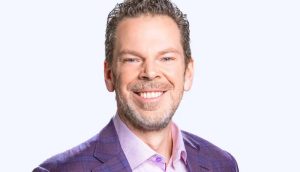
When it comes to media plans that are racially conscious, Ishma Alexander-Huet says there’s not much scrutiny.
“There’s gen-pop, which is mass and follows the numbers, and then there’s multicultural where you suddenly spot-buy some billboards in Markham or in Brampton based on the demographic you’re going for,” she says.
But reaching BIPOC with marketing is a much more nuanced conversation. Alexander-Huet, VP of client advice at Initiative, says even multicultural buying tends to be done based on what groups are seen as areas for growth, such as Asian and South Asian. Specifically reaching Black Canadians, she says, is often not a discussion. But it has to be, she argues – at every step of the way.
Over the last three months, many agencies, brands and entities within the ad industries made promises to look at their numbers, to undertake new D&I mandates and to develop new policy. But in the latest roundtable from strategy and MiC, industry professionals discuss why inclusion has to go beyond initiatives and be rooted in an organization’s culture.
In the first part of our roundtable, participants discuss how race affects dynamics within agencies and how they deal with clients. In today’s conclusion, they share how that dynamic translates into the work agencies do – from the creative they produce to the media plans they develop. They also share what agencies can do right now to create meaningful change that ensures more people get their fair share of voice.
Our panelists were Dhaval Bhatt, creative director at Rethink, Maxine McDonald, senior director at Media Profile and co-founder of the Code Black Communicator Network, Mark Harrison, founder of the T1 Agency and founder of the Black Talent Initiative and Alexander-Huet.
Check out part two of our roundtable below, along with some highlights from the discussion.
On how race and class intersections really play out in planning
“Because household income still plays into targeting online… when you’re part of a race that benefits from a higher socioeconomic standing, by default you’re excluding people.” — Alexander-Huet
On the small ways we exclude people
“Look at every single asset, piece of content, that is within your control and see if it reflects. Whether it be an onboarding manual that HR puts out, current content that you’re publishing or your image bank… If you have content in your organization that doesn’t reflect what people look like, then that’s an easy place to start. If I go on a company’s website and I don’t see myself, I don’t feel welcome.” — Harrison
On a simple, yet overlooked step toward inclusion
“I’ve had this conversation with casting with a lot of people. It’s often dismissed, like, ‘That’s too frivolous.’ I agree that it’s a very very small thing, and a very small step, but it’s one that has not been taken the way it should be. It begs for an easy fix.” – Bhatt
On taking the conversation beyond a single moment
“Pick something and commit to it long-term. There are so many elements to this conversation. There are a lot of things that need to be fixed, and it can be a bit overwhelming. I’ve seen a lot of knee-jerk reaction. My hope is that whatever is committed to is committed to long-term. If it’s prioritizing paid internships so that it’s removing the race and class barrier, then commit to that forever. If it’s looking at changing your senior leadership, then make sure that is a priority indefinitely.” – McDonald























